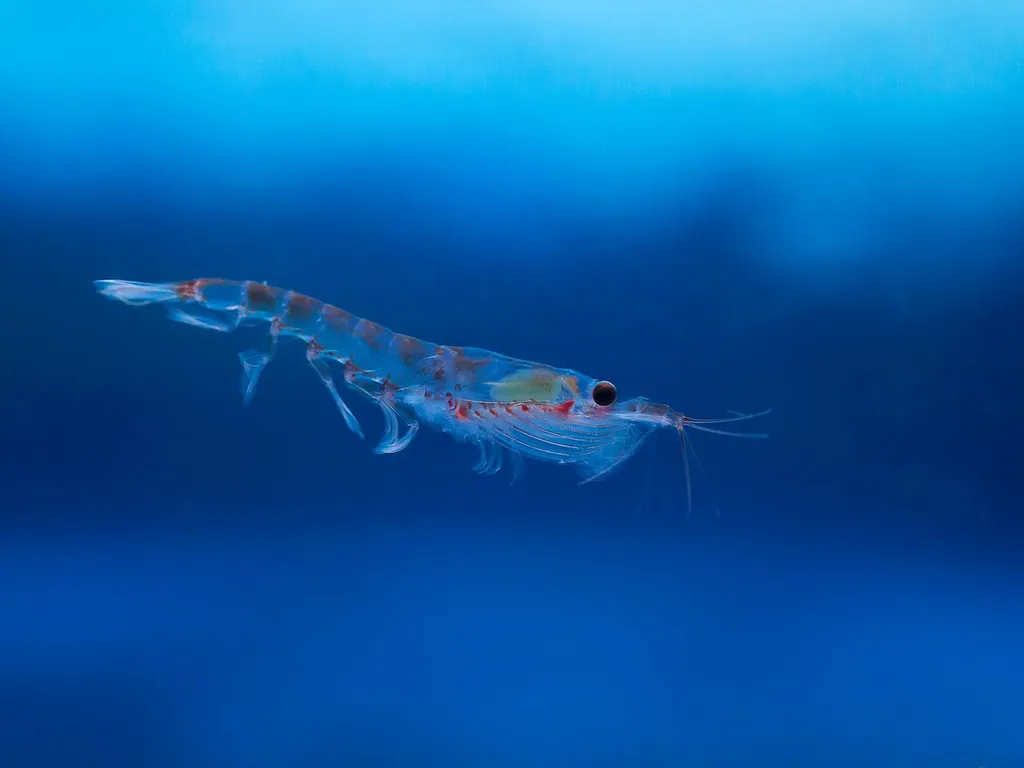In the frigid waters of the Southern Ocean, a tiny creature plays a massive role in the ecosystem. Antarctic krill, Euphausia superba, are not just a vital food source for whales, seals, and penguins; they are also hosts to a diverse and complex gut microbiome that could hold secrets to survival in extreme environments. A recent study published in the journal mSystems, which translates to “Microbiome Systems,” has shed new light on the metabolic potentials of these gut microbes, offering insights that could have far-reaching implications for various industries, including energy.
The study, led by ZhanFei Wei from the State Key Laboratory of Mariculture Biobreeding and Sustainable Goods at the Yellow Sea Fisheries Research Institute, Chinese Academy of Fishery Sciences, employed advanced techniques like direct metagenomics and culture-enriched metagenomics to uncover the composition and diversity of the gut microbiota in E. superba. “We found a highly diverse and tissue-specific microbiota,” Wei explained. “This diversity is not just fascinating from a scientific perspective; it also hints at a complex web of interactions that could be crucial for the krill’s survival in such harsh conditions.”
The research identified 12 metagenome-assembled genomes (MAGs) that might represent novel species. These MAGs were grouped into two distinct clusters based on their completeness of metabolic modules. While the MAGs in cluster 2 had lower read relative abundance, they exhibited a greater number of amino acid synthesis modules. This finding suggests that these microbes could be playing a significant role in the krill’s nutrient acquisition and overall health.
One of the most intriguing aspects of the study is the potential role of these gut microbes in synthesizing essential compounds like glutathione, heme, ubiquinone, vitamins, and betaine. These compounds are known for their antioxidant and osmoregulatory properties, which could be crucial for the krill’s survival in the extreme Antarctic environment. “The identification of these metabolic functions suggests that the gut microbiota might be facilitating the krill’s adaptation to its harsh habitat,” Wei noted.
The study also found that the functional genes in the 12 MAGs had abundant transcripts, indicating high metabolic activity in the E. superba gut microbiota. This high activity level could imply that these microbes are not just passive residents but active contributors to the krill’s physiological processes.
So, what does this mean for the energy sector? While the direct commercial impacts might not be immediately apparent, the insights gained from this research could have significant implications for biotechnology and bioenergy. Understanding how these microbes contribute to the krill’s survival in extreme environments could inspire new strategies for developing robust microbial communities for biofuel production or bioremediation in challenging conditions.
Moreover, the identification of novel species and their metabolic potentials could open up new avenues for discovering bioactive compounds with potential applications in various industries. The study’s findings could also contribute to our understanding of host-microbe interactions in polar marine ecosystems, which could be crucial for developing sustainable practices in aquaculture and fisheries.
In conclusion, the study by Wei and his team has provided a comprehensive characterization of the gut microbiome of E. superba, revealing its diverse and functionally distinct microbial community. The metabolic analysis demonstrated that these microbes contribute to host nutrient acquisition and environmental adaptation. As we continue to explore the intricate web of life in the Southern Ocean, we may uncover even more secrets that could shape the future of various industries, including energy.

